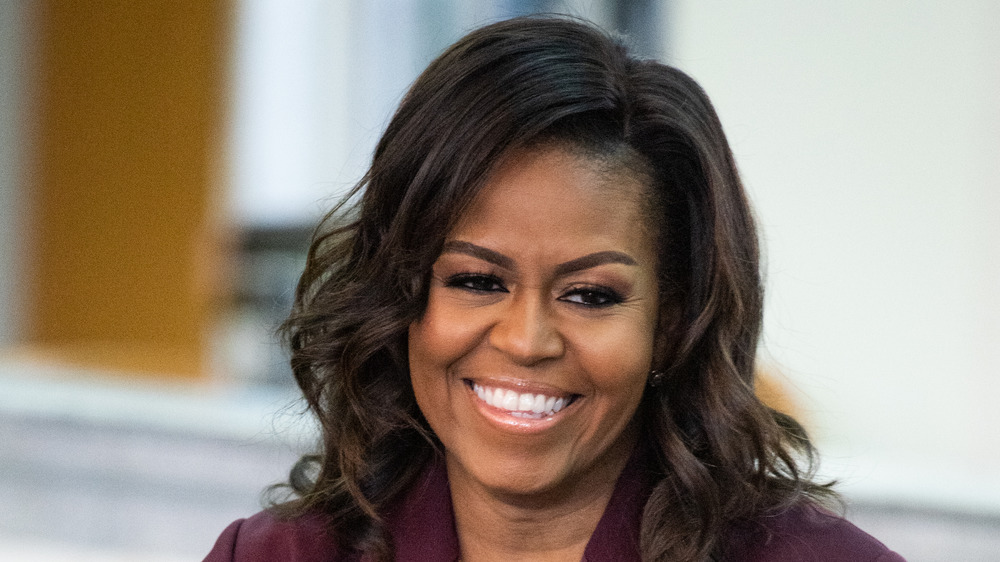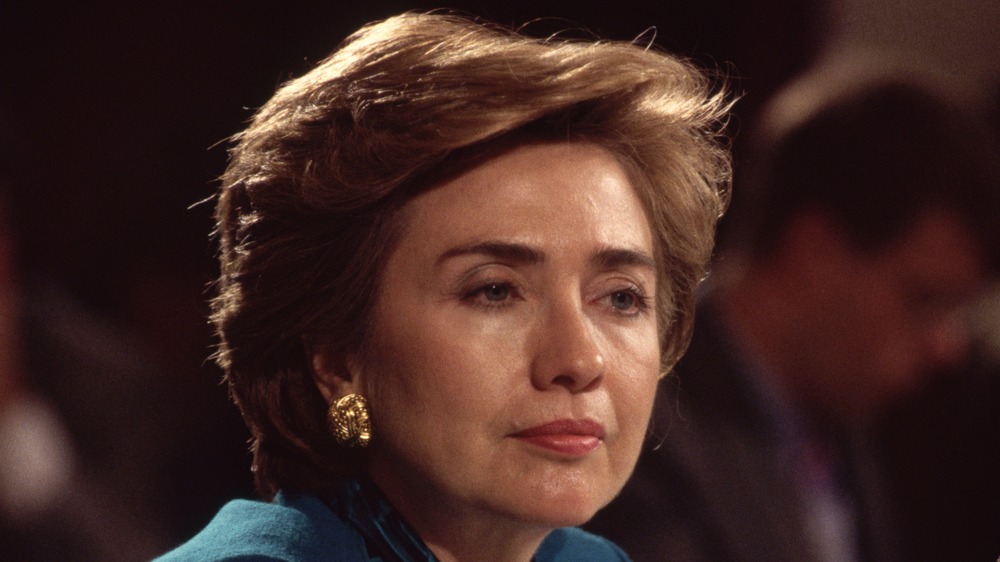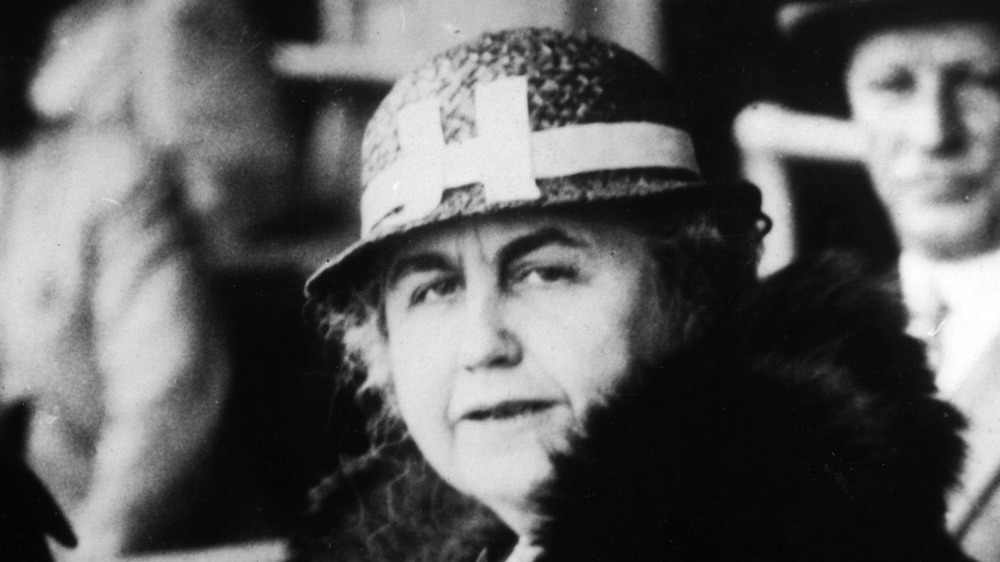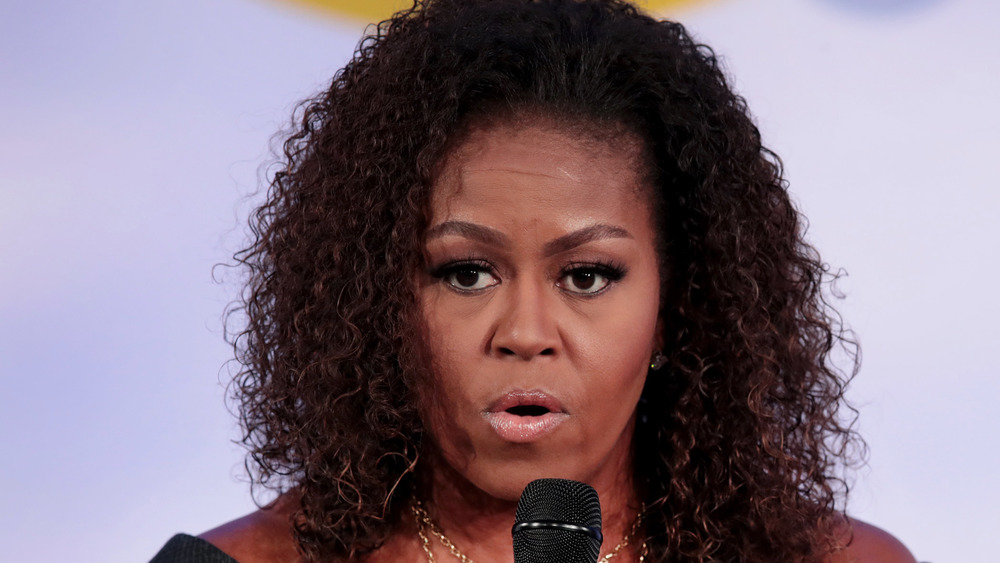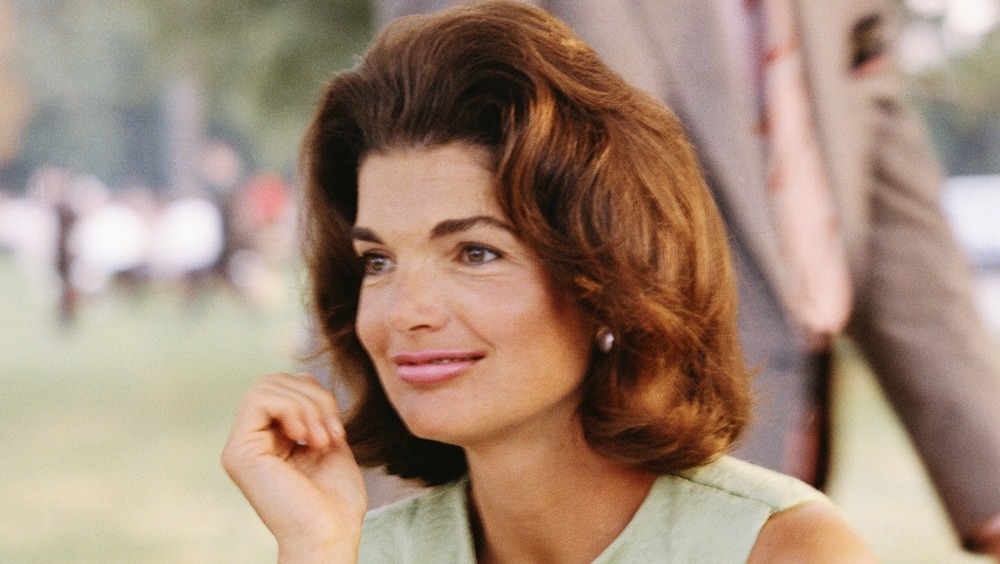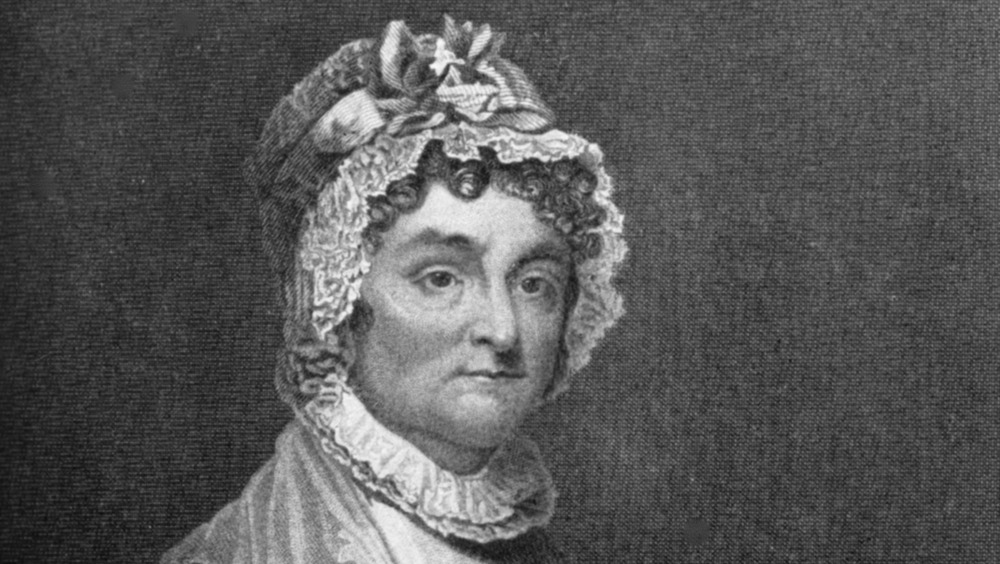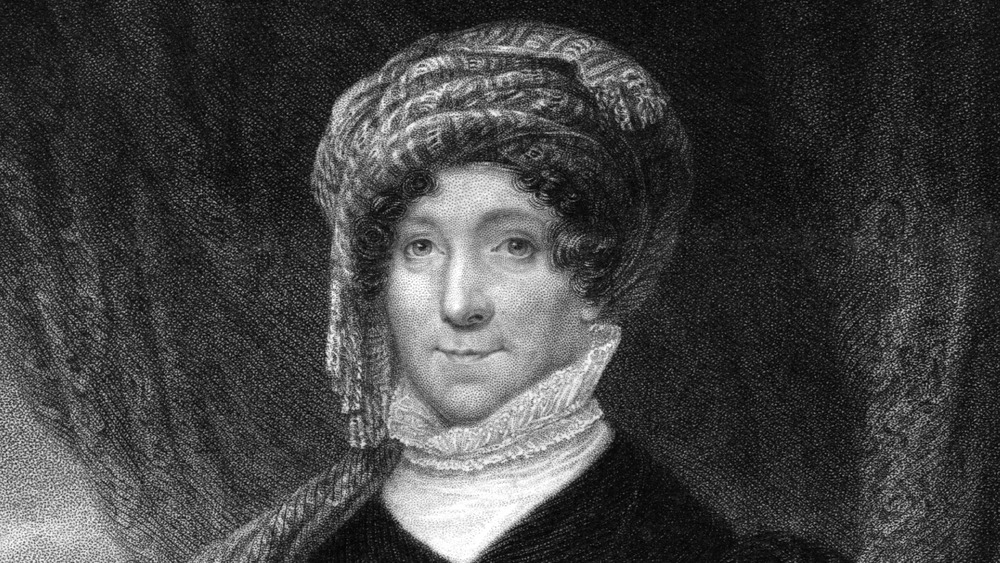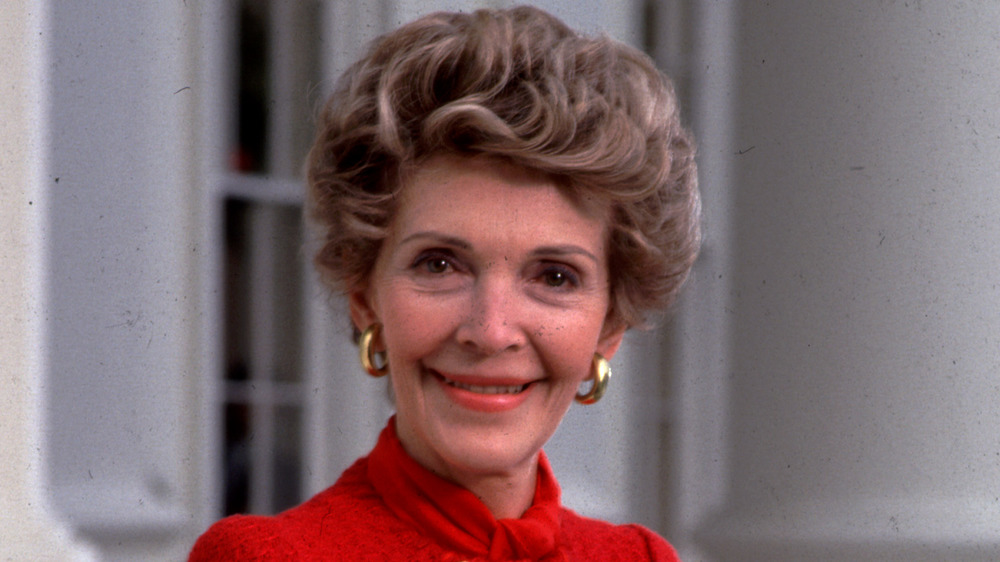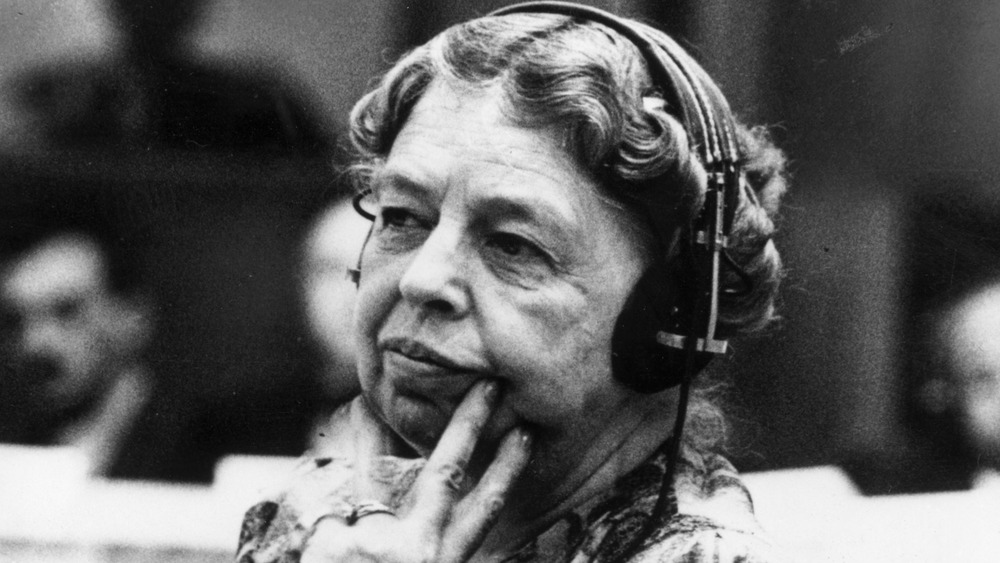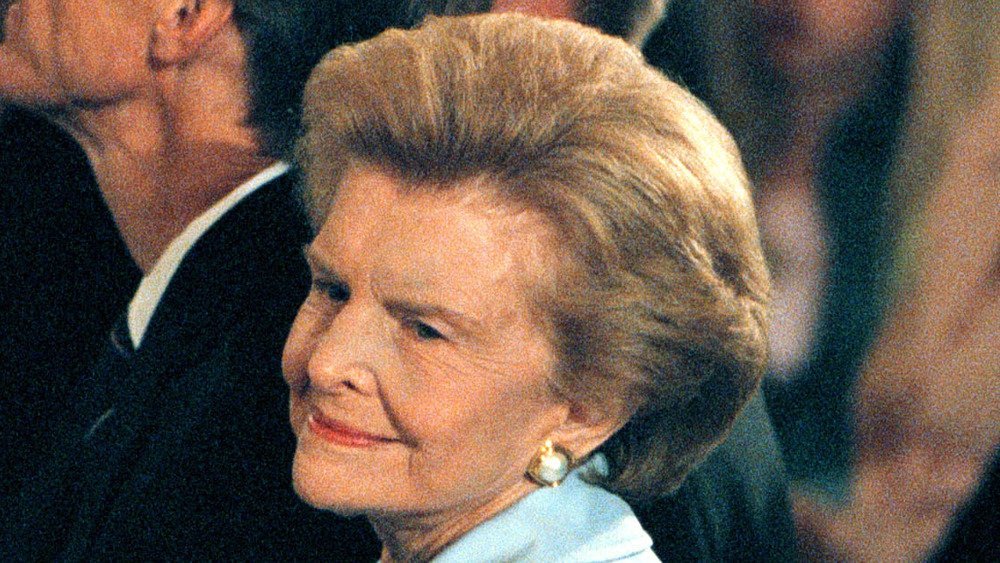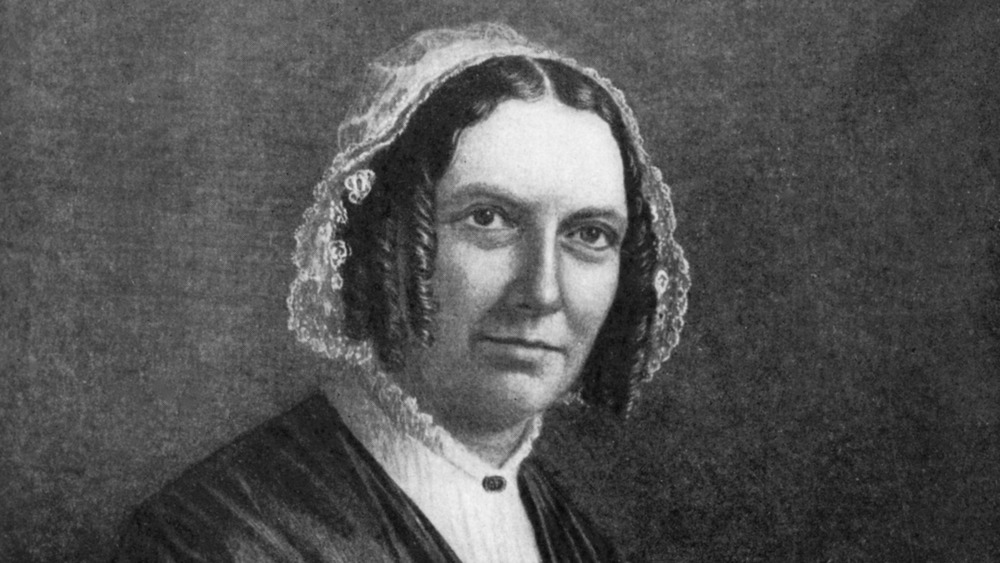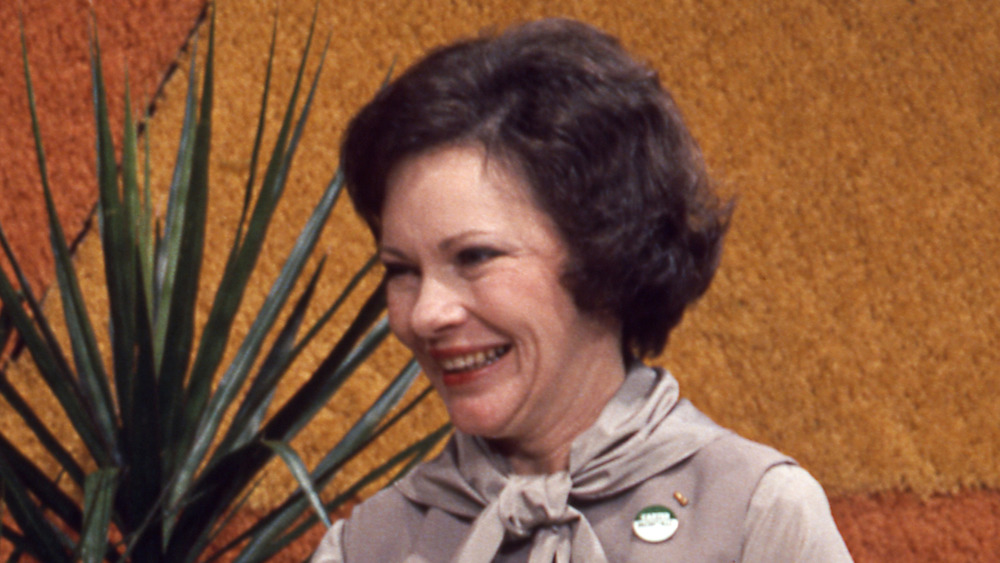The Most Powerful First Ladies In US History
Who said that the office of the first lady is one without power or influence? While political offices in the United States have been held, for the most part, by men, progressive and social movements throughout the nation's history have fought in different venues in order to help women reach the same levels of power as men. And while the final glass ceiling yet to be broken for women is the presidency itself, this does not mean that women have not held sway in the West Wing throughout the centuries.
In some cases, the influence of women predates Washington, D.C., and the White House itself. Since George Washington was first elected to become commander-in-chief in the newly formed United States, only one president, James Buchanan, did not have a wife to accompany him to the White House. And seeing that Buchanan's presidency ended with the succession of southern states, the country exploding into Civil War, and CBS News ranking him as the second-worst president in the history of the nation, it might be a good idea to have a plus one for the office.
First ladies can be a political ally, a confidante, a powerful promoter of the agenda the administration wishes to get across, and can shape the legacy of the president. Even after they leave Washington, the first ladies still hold great power and influence in the nation. So here are the most powerful first ladies in U.S. history.
Hillary Clinton
No other former first lady has come closer to the office of the presidency than the 42nd first lady, Hillary Clinton. While still in the position, Clinton became the first wife of the president to run and be elected to public office when she won a seat in the U.S. Senate representing New York in 2001, according to Biography.
CNN reports that when then-candidate Bill Clinton was campaigning in 1992 for office, one of the slogans he used during the presidential race was "buy one, get one free," indicating that if elected, Hillary would have a hand in forming the administration's policy. He even compared himself and his wife to another famous Democrat power couple. "If I get elected president, it will be an unprecedented partnership, far more than Franklin Roosevelt and Eleanor."
Once in the office though, Hillary became a favorite target for the opposition, from her work in attempting to overhaul the healthcare system, something that according to White House.gov, her husband asked her to do, to her decision to form her own office in the West Wing. Despite this, Hillary's voice and presence in Washington and worldwide could not be ignored. Her speech at the 1995 United Nations Fourth World Conference on Women in Bejing was a high point as first lady. After serving as a New York senator throughout the George W. Bush administration, she served as the secretary of state during the first term of the Obama Administration.
Edith Wilson
While Hillary Clinton's chances at the office of the presidency ended in defeat, she might have not been the first woman to hold the office of the commander-in-chief. In fact, about a century prior, Edith Wilson spent 17 months as the de-facto POTUS for her husband, Woodrow Wilson, as told by Biography.
For Woodrow and Edith, both marriages were their second. Edith, according to First Ladies, was married nearly 12 years before her husband, Norman Galt, passed away. When Edith married Woodrow Wilson in 1915, he was already president. The Wilson White House feared Edith's presence would hurt his chances for re-election. Despite their fear, Woodrow Wilson was re-elected, and Edith quickly established herself in the White House.
She screened calls and messages for the president, angering the president's trusted advisor Edmund House and his press secretary Joseph Tumulty. When the United States entered World War I, Edith made sure she stayed up to date to classified information while volunteering and fundraising for the war effort at home. After the war ended in an armistice, Edith accompanied her husband on a tour of Europe, a first for the first lady.
In October 1919, almost a year after the war ended, Woodrow Wilson suffered a massive stroke. Left bedridden, Edith would not consider forcing her husband to resign, as she said it would depress him. So for the final 17 months of his presidency, any document or individual who needed the president's approval or opinion had to go through Edith.
Michelle Obama
It is unsurprising that as the first African American first lady, Michelle Obama faced as many racial taunts and attacks as her husband. Despite this, Obama's elegance mirrored that of Jackie Kennedy, and today, her political influence mirrors that of Hillary Clinton. All while, according to Gallup, continuing to be considered the most admired woman in the world years after leaving the White House.
Like Hillary Clinton, Michelle Obama attended an Ivy League university to study law (Clinton attended Yale while Obama attended Harvard Law School), according to Biography. She graduated in 1988 and for the next two decades, she would work various jobs in the public sector, working in different community positions throughout Chicago. Then, 2008 happened.
Barack Obama's 2004 Democratic National Convention speech had made him a household name in the party and by 2008, he upset the favored Hillary Clinton to become the Democratic nominee and eventual president of the United States. According to the Obama White House, First lady Michelle Obama spent her eight years in office working on four initiatives — advocating for healthy families, service members and their families, higher education, and international adolescent girls education.
She helped launch initiatives such as Let's Move!, Let Girls Learn, Reach Higher, and Joining Forces to combat the issues she saw in the country. According to First Ladies, Michelle met with thousands of federal workers, something not seen on this level since Eleanor Roosevelt during the Great Depression, to further build support for the Obama Administration.
Jackie Kennedy
The mythology surrounding the Kennedys in large part was created by First lady Jackie Kennedy. Less than a week after burying her husband, the widowed first lady invited Life magazine journalist Theodore H. White to the Kennedy family compound in Hyannis Port, Mass. There, as People recounts, Kennedy quoted a line from the musical, Camelot, to describe the Kennedy White House. "Don't let it be forgot, that for one brief, shining moment there was Camelot."
Unlike Hillary Clinton or Edith Wilson, Kennedy looked to influence the nation through art and culture instead of politics. According to the JFK Library, Kennedy believed that the White House had great importance as a representation of American history and for anyone occupying the building, so she, with the aid of experts and artists, completely refurbished the White House with the finest furniture and decor. She then gave a tour of the White House in 1962 on CBS TV, projecting the changing times that JFK's election represented.
She furthered displayed American culture and artistry by inviting scientists, poets, writers, musicians, and many more to the White House for dinners, performances, and to interact with the top statesmen and politicians in Washington. As a fashion icon, Kennedy is still regarded as one of the most influential individuals of the 20th century for her wardrobe.
The Kennedy's legacy is still looked at as the height of elegance to occupy the White House, thanks in large part to the first lady.
Abigail Adams
Before Barbara Bush was the first lady and first mother of two different presidents, Abigail Adams was the first lady to the nation's second commander-in-chief and the mother to its sixth. According to History, long before the issues of women's rights, the abolition of slavery, and female education became mainstream, Adams advocated for these issues in the young United States.
According to Women's History, despite women being limited in how much property they could own, Abigail Adams ran the Adams house and viewed the property as hers while her husband, John Adams, traveled excessively prior, during, and after the American Revolution. Throughout his life, John Adams relied on his wife to be an advisor and valued her opinion on political matters, even if he did or did not agree. One such disagreement was Abigail telling her husband, "remember the ladies" when John was taking part in the First Continental Convention. The message was for the convention to form a nation that was not hostile to women. She continued by saying, "your sex are naturally tyrannical is a truth so thoroughly established as to admit of no dispute." She also traveled with John Adams during his tour of Europe while working as a diplomat.
Though a long way from a feminist in the modern sense, Abigail advocated for furthering women's education in order for mothers to prepare their sons to run the nation. After her time in the White House, she maintained correspondence with Thomas Jefferson and James Madison.
Dolley Madison
If one would go to the White House today, they would only find one piece of decor that was present when the mansion was opened in 1800, as told by NPR. That would be the famed large portrait of the nation's father, George Washington. This due in large part because of the actions of a 15-year-old slave named Paul Jennings and first lady Dolley Madison.
However, prior to her husband's election, Dolley Madison served as a de-facto first lady for the previous president. According to Biography, James and Dolley Madison had given up their political life by 1797. However, three years later, James' close political ally and colleague, Thomas Jefferson, was elected president and asked James to serve as his secretary of state. A widower, Jefferson relied on Dolley to serve as the first lady for functions and decorated the newly formed White House.
When James Madison was elected president after Jefferson, Dolley Madison's time as first lady can be looked at as an early version of Jackie Kennedy. She routinely hosted functions and parties in order to illustrate a sense of dignity of the White House and help her husband's political agenda. White House History says Dolley Madison had a special ability to quell any arguments from statesmen, soldiers, and flustered house guests. After being forced to flee the White House after the British invaded Washington, D.C., first lady Madison returned days later and continued to host gatherings in the partially destroyed White House.
Nancy Reagan
Just how the modern conservative party was built on the legacy and tenure of President Ronald Reagan, the first lady is following in the footsteps of Nancy Reagan. And, for better or for worse, one of the most remembered policies of the Reagan Administration, the "War on Drugs," was built through the passion from Nancy Reagan, as reported by the National First Ladies Library. As well, Nancy brought a level of Hollywood glamour to the White House not seen since Jackie Kennedy.
According to History, the war on drugs was the phrase used with government policies that sought to increase prison sentences for drug users and dealers. As told by Drug Policy, while the war on drugs began under the Nixon Administration a decade prior to Ronald Reagan, it was the 1980s that saw the greatest escalation. The slogan used by the Reagan Administration and by first lady Nancy Reagan was, "Just Say No." She came up with the slogan while visiting an Oakland school, according to the Los Angeles Times. Ivy Cohen, president of the Just Say No Foundation from 1987 to 1997, said Nancy Reagan, "galvanized attention to the issue."
Today, as reported by the Guardian, the slogan now holds a negative connotation as the war on drugs targeted lower-income and African American communities specifically and, as the opioid epidemic illustrates, failed to acknowledge the underlying issues of systemic racism and income inequality when it came to drug use and distribution.
Eleanor Roosevelt
Prior to Hillary Clinton, Jackie Kennedy, or Michelle Obama, Eleanor Roosevelt became the standard for a first lady. According to CBS News, Eleanor was the first to write a daily news column, host a weekly radio show, hold her own press conferences, and became a globetrotting humanitarian during her 12 years in Washington, D.C., and after she left.
When Franklin Roosevelt was elected president in 1932, the United States was in the midst of the worst economic collapse it had ever experienced. According to Biography, Eleanor traveled throughout the nation in order to gather information and an understanding of the severity of the Great Depression and reported her information back to her husband, who in turn would create programs and policies to assist the nation. She also pushed her husband to advocate for equal rights for both African Americans and women in the country. Her policies were so progressive, FBI Director J. Edgar Hoover believed her to be a communist or communist sympathizer and ordered agents to follow her movements.
Following FDR's death, President Harry Truman still relied on the former first lady. The FDR Library reports that Truman appointed her to the United Nations General Assembly. She also served as the chair for the Human Rights Commission, where she drafted the Universal Declaration of Human Rights. Since her death in 1962, as Now This News says, Eleanor Roosevelt's legacy in pushing for human rights is felt in today's social movements.
Betty Ford
Betty Ford had the shortest tenure as the first lady on this list, not even holding the position for more than three years. Still, Ford left her impact as a bit of a firestorm. Despite being a part of the conservative Republican Party, according to the Gerald Ford Foundation, Ford took some strong liberal stances that made her very popular.
A year and a day after she became the first lady, Ford shocked the nation in an interview with 60 Minutes. In the interview, she said she would have tried marijuana if she was younger, supported the Roe v. Wade decision, and said she would not be surprised if her daughter had an affair. Biography reports that after the interview, the more conservative faction of the party began to refer to her as "No Lady" and pushed for her resignation. However, in a general poll among the nation, Ford's popularity soared to 75%. This in part came because a few weeks after moving to the White House, she was diagnosed with breast cancer. She saw how the public became more aware of the disease and how her platform could have an influence on people.
During her time in the White House, Ford was more popular than her husband, whose approval rating, Gallup shows, plummeted following his pardoning of former President Richard Nixon. During the 1976 campaign, "Vote for Betty's Husband" was a common button that could be seen in conservative circles.
Abigail Fillmore
Millard Fillmore is not as well-known a name when compared to presidents like John F. Kennedy, FDR, or Ronald Reagan. Still, it is not Millard that is being discussed but instead first lady Abigail Fillmore. Abigail's impact on the White House and as an advocate for progressive stances reverberates even today.
According to Britannica, Abigail was born to Lemuel Powers, a Baptist minister, and Abigail Newland Powers, who stressed the importance of education. She became a schoolteacher, and this is where she met her future husband, Millard Fillmore.
When she got to the White House, this love of education followed. As told by Buffalo History, when she learned that the White House did not have a Bible or a dictionary, she raised funds for the first White House Library, and first lady Fillmore became its first librarian. Today, the White House Library has expanded greatly but still contains the original 12 volumes from the first library.
Like so many first ladies, Abigail took many progressive stances during her time in Washington. She led efforts to outlaw flogging in the U.S. military and was an advocate for women's rights. According to E History, historians believed she supported the principles of the 1848 Seneca Falls Women's Rights Convention. She also was an astute political mind who her husband relied on. The president went against his wife's advice and signed the Fugitive Slave Law, requiring runaway slaves to be returned to their masters, which destroyed his political chances for re-election.
Rosalynn Carter
In July 2020, Rosalynn and Jimmy Carter celebrated their 74th anniversary. According to USA Today, the couple has been together longer than any other president and first lady. Like her husband, during and after her time in the White House, Rosalynn has worked tirelessly as a humanitarian around the world.
Similar to how FDR relied on Eleanor Roosevelt to travel through the nation to get an understanding of the issues facing the country, Jimmy relied on Rosalynn in the same manner. According to First Ladies, the president viewed his wife as a consultant for domestic and foreign affairs decisions, speeches, and appointments. She also worked closely with Secretary of Housing and Urban Development Patricia Harris and Secretary of Health, Education and Welfare Joseph Califano.
Her work with the mental health community was well documented as well. In 1977, Rosalynn worked as the active honorary chair of the President's Commission on Mental Health. She oversaw a board that investigated and prepared a report on the issues in the mental health community from economic, medical, and discrimination problems. The result was the Mental Health Systems Act of 1980. This activism continued after leaving Washington when she and her husband formed the Carter Center in Atlanta, Ga. Rosalynn is also the president of the board of directors for the Rosalynn Carter Institute for Caregivers. Jimmy Carter told CSPAN in 2015, "the best thing I ever did was marrying Rosalynn. That's the pinnacle of my life."
